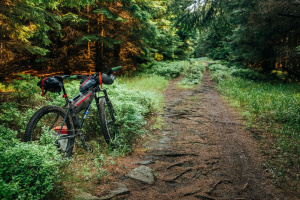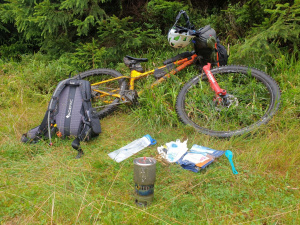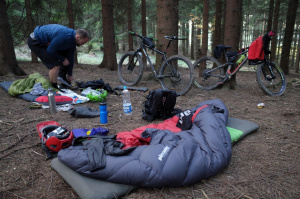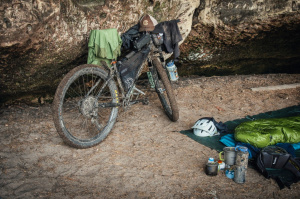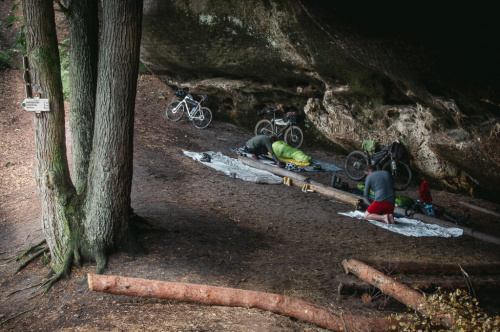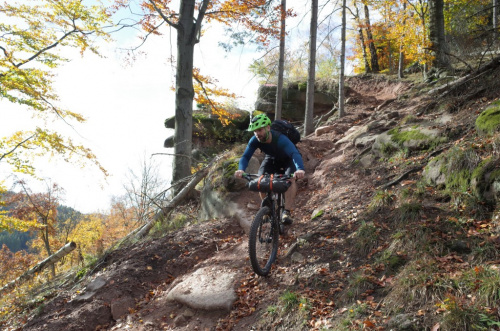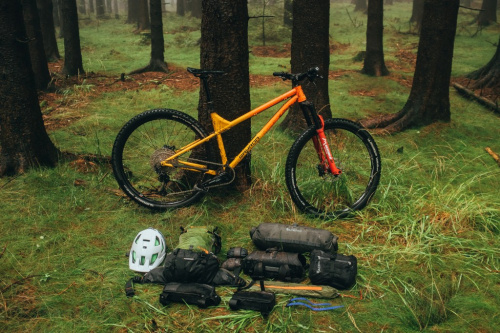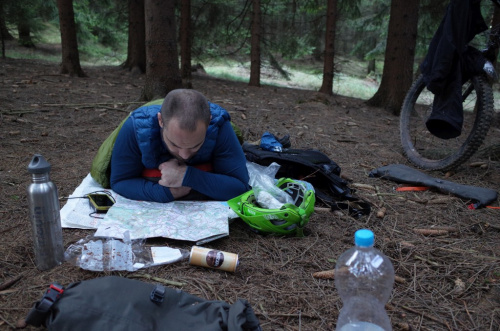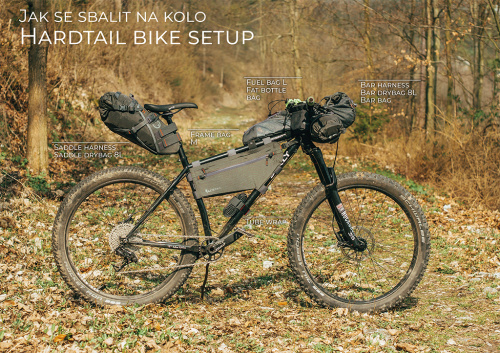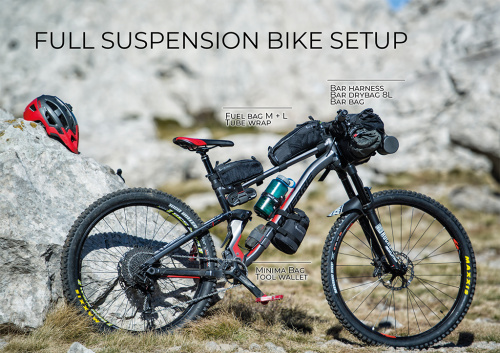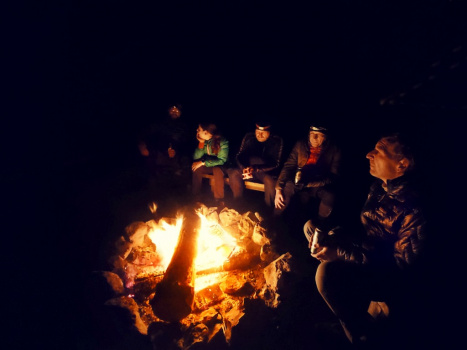You have probably already come across the term Bikepacking, it has been appearing more and more often in recent years.
But what does this bikepacking mean?
The term Bikepacking is a combination of the words bike and packing. That is to say, packing for a bike. In other words, the combination of riding a bike with basic equipment attached for an overnight stay in the countryside. So actually more or less multi-day off-road cycling lightly. Bikepacking combines all aspects of hiking such as freedom of movement, overnight stays and cooking in nature, with the pleasures of cycling enhanced by exploring new, more remote places. Ideally unsupported by civilisation, off tarmac roads and away from populated areas.
"I don't need what I don't have."
I don't have time for an expedition, I go to work.
It doesn't matter if it's a weekend adventure or a long expedition. It's about traveling by bike with at least one overnight stay (called an overnighter - one day there, one day back). Yes, that's important, to spend at least one night in nature, to get away from civilization, to relax, to get to know yourself and your friends more.
I don't have a bike for that.
Nor does it matter if your bike is gravel, expedition special or a time-tested MTB. Just as long as it's fully functional and your adventure will be anything but endless machine repair. The goal is to get out of the city and get close to nature, at least for a while, and remind ourselves of what many of us have forgotten thanks to the hectic times we live in. You can't do without nature!
I don't have the mileage.
I don't mind. It's not a race. You determine how far you go, when and where you put your head to sleep. You take everything you need with you, no receptionist waiting for you.
Then I can dust off my old panniers, mount the racks and go!
I don't think so. Here's the difference with "classic cycling". If you've been reading carefully, you'll have noticed that we're writing about off-road lightweight cycling. And in order to really not be limited in our adventures, and to not have to stick to paved roads, we need to keep the load on the bike to a minimal degree and in a way that doesn't negatively affect its permeability through the terrain and handling.
Forget about racks and the subsequent loading of the wheels in their centres, i.e. "pinning the bike to the ground". We wouldn't get very far and the first root would show us what kind of tank we are dealing with.
This is where we come to talk about bikepacking or also called carrierless panniers. As the name suggests, no tools are needed. Their attachment is usually done with more or less sophisticated systems of straps and Velcro, which is fine. But the most important thing is the placement of the load on the bike. Carrierless panniers are designed so that the weight of the load stays in the axis of the bike and is concentrated towards its centre. This achieves almost unchanged ground clearance and minimizes the bike's handling. Bingo! We're home.
Will these bags be enough for me? Will I be able to pack in them at all?
They will. Assuming you choose the larger options, you have a 16L handlebar volume, a 16L under-saddle volume, depending on the bike and size, about a 4L frame pannier, and then maybe a pannier behind the stem and an additional pannier on the handlebars. In sum, a minimum of 40L volume, where at least 32L can be fully waterproof. That's what you pack for one summer night right? If you really can't fit, you can take a small rucksack, for water or light stuff it may come in handy. But it's much more enjoyable to ride without a backpack, it's better to weight down the bike and stay fresh longer.
What to bring?
No big deal. A sleeping bag, a mattress, and depending on the weather a tent or tarp (canvas shelter), but with good planning you can do without, plan to sleep in one of the many hiking shelters and you'll be lighter. (Note: Also, plan your route by wells and springs so you don't have to lug around hectolitres of water unnecessarily.)
Underwear for your sleeping bag (you don't want to sleep in sweaty clothes and you'll ruin your sleeping bag). An extra layer of clothes, it can get a bit chilly in the evening. Cooking gear (an honest dinner, morning coffee and breakfast is essential), bike tools, headlamp, phone...just standard hiking gear so you are self-sufficient. Don't forget a poop scoop, no one needs to know where you've done your business!
What/where?
A little packing guide in the photo below. Don't take this as a rule of thumb, individual preferences can vary greatly, especially as you gain experience.

I'm going!
Before you set off on your first bikepacking adventure, consider taking at least one friend. If you're not a lone wolf and you're not sure about crampons when it comes to sleeping, you can definitely use the company. The ride will be more fun, you can agree on who's bringing what gear, and you'll have a light-hearted night. There's no need to go on about how much a night by the campfire entails, you'll discuss more than enough. And if there's not a willing colleague right in your town, so much the better. Plan a route with a contact point and once you've descended, you can start discussing the first experiences.
Notes:
After the trip is done, make a note of the gear you didn't use at all and cross it off your list for the next trip. By doing this, and as you gain experience, your gear will get smaller, your bike lighter and your travels more fun.

